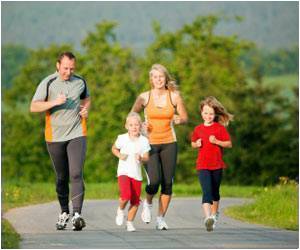Children don’t necessarily enjoy violence on the screen, as claimed by many television show producers and movie makers, concludes an Indiana University study.

“You don’t have to cram violence into these cartoons to get kids to like them. They’ll like them without the violence, just as much if not more,” he said.
Violent cartoons have been a staple of Saturday morning programming for decades and now are readily available on cable television channels specializing in children’s shows and cartoons. Many classic cartoons, such as those in the “Looney Tunes” series, have featured slapstick violence. But in recent years, action programs such as “Pokemon” and “Mighty Morphin Power Rangers” have drawn much attention both because of their violent content and their popularity with young people.
Some content analyses have found that as many as 70 percent of children’s television shows have violent content.
“For many producers and media critics, the question is not if children love violence, but rather why children love violence,” Weaver and his co-authors wrote in the paper. “Our goal in this study was to examine children’s liking of violent content while independently manipulating the amount of action, which is often confounded with violence in the existing research.”
Co-authors include Jakob Jensen of Purdue University, Nicole Martins of IU, Ryan Hurley of North Carolina State University and Barbara Wilson of the University of Illinois.
Advertisement
Research assistants showed each child one of four versions of a five-minute animated short created for the study and then led them through a questionnaire. The short was designed to resemble familiar slapstick cartoons. Four different versions of the cartoon were used. Six violent scenes were added to one version, which was carried out by both characters and in response to earlier aggression. Nine action scenes were added to another version. Two other versions had lower amounts of action or violence.
Advertisement
“That was a little surprising,” said Weaver, the father of two young sons. “There is a lot of talk about boys being more violent and more aggressive, for whatever reason, social or biological, and yet we found that they identified with the characters more when they were non-violent . . . They liked the characters more and they enjoyed the overall cartoon more.
“This is good news. If producers are willing to work on making cartoons that aren’t violent so much as action packed, they can still capture their target audience better . . . and without the harmful consequences.”
On the other hand, among girls violence did not decrease wishful identification of the characters. Weaver believes this may be because such slapstick cartoons are geared more toward boys than girls. Also, girls perceived the characters as boys, even though they were created without sexual attributes.
“They’re not going to identify with what they perceive to be male characters, whether they are violent or not,” he said. “They didn’t prefer the more violent programming. They were just using other cues besides the character’s violent or non-violent behavior to determine how much they enjoyed the show.”
Weaver would like to apply his research to characters in more female-oriented programs, like “The Powerpuff Girls.” He also recognizes that violence is seen by producers as an easy means to introduce action and conflict into a story.
“Alternatives could be things related to speed — characters going fast, moving quickly. It was one way that we manipulated action in this study,” he said. “If you can increase action without increasing violence, which clearly is possible as we did it in this study, then you can increase the enjoyment without potential harmful effects that violence can bring.
The cartoon the researchers used, “Picture Perfect Thief,” featured a villain called Eggle, who attempted to steal a painting created by a hero called Orangehead. Eggle ultimately fails and the hero’s painting wins first place in an art show. It was created by a friend using Macromedia Flash.
The study has been published in the journal Media Psychology.
Source-Medindia







